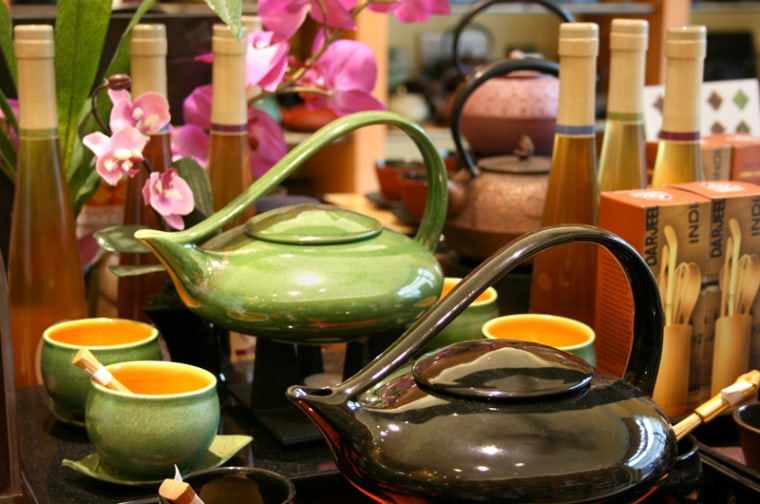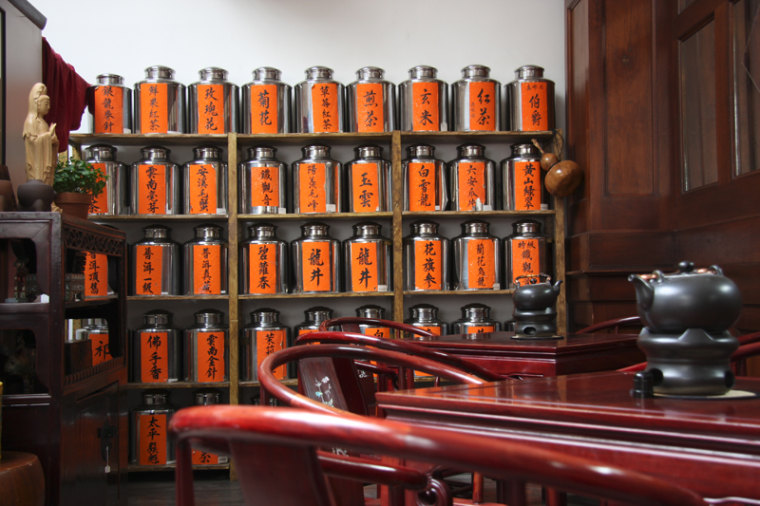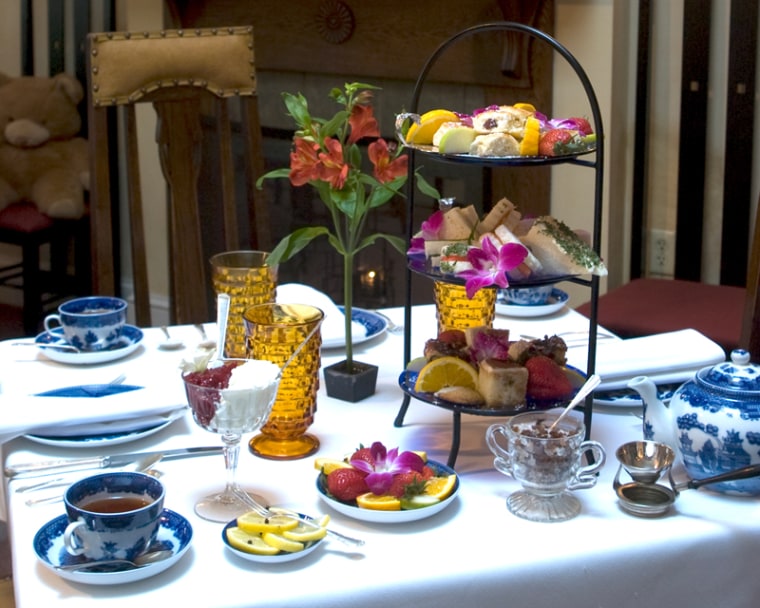Taking tea is about socializing and relaxing. It’s about delicate china in a vintage European setting or around a Zen water fountain. It’s about scones and pastries or dumplings and steamed tofu. Taking tea means getting together or getting away. It has health, history and social benefits. But while taking tea can be about many things, a great tea room has to be about one thing: great tea.
To an outsider, the tea industry can seem overwhelming. It’s growing exponentially in America and carries as much mystery and nuance as wines and coffees. But according to our panel of tea experts, finding America’s best tea rooms is rather simple:
“I’m not a tea snob,” says Bruce Richardson, arguably America’s leading tea expert, “but I look for a tea room that pays attention to tea.”
Richardson—who lectures frequently on tea and wrote “Great Tea Rooms of America” as well as “Great Tea Rooms of Britain,” and other titles—looks for a well-chosen tea offerings, a well-brewed and properly poured cup, and an experience that creates a lasting impression.
The Tea Room in Savannah, Ga., fits the bill for Richardson, who says owner Elizabeth Ruby created an interesting space in the model of Scottish architect Rennie Macintosh, known for designing respected Glasgow tea rooms. Ruby can usually be found on hand, making sure her green, oolong and black teas are steeped to perfection, and cultivating a creative menu to accompany them.
“Elizabeth always has a chef that incorporates Low Country cuisine into a traditional afternoon tea,” Richardson says. Tea in Britain without a cucumber sandwich would leave guests disappointed, but he says that "America is such a melting pot of cuisine; we’re free to mix it up.”
Like their tea fare, Richardson points out the British are generally loyal to select teas: Earl Grey and English breakfast teas. “That’s what they were raised on and that’s what they will always drink,” he says. Whereas Americans, “always want to know what’s new.”
While our expert’s picks for the best tea rooms in America varied from traditional Asian tea rooms to vintage European rooms and Manhattan’s most modern, they all agreed that America’s tea industry is the hottest, fastest-growing tea industry in the world.
“The concept of a tea room is changing dramatically,” says Joseph Simrany, president of the Tea Council of the U.S.A. “It’s as varied as coffeehouses.”
Simrany says he appreciates the Vintage Tea Leaf in Long Beach, Calif., which embraces the “old fashion, but applies new marketing techniques. ”Enter into a showroom of tea collectibles from loose leaves to china and lotions and hats before entering the tea room decked out in marble floors and crystal chandeliers." Updated selling practices like these made Vintage Tea Leaf successful before the tea boom. The tea industry can also thank the coffee, cheese and wine industries for paving a path for tea in America. But unlike fine wines, “the most expensive tea in the world is affordable to everyone,” Simrany says.

Tea’s health benefits have contributed to its popularity. Black tea has flavonoids related to anti-plaque buildup in arteries. Green and white teas are high in antioxidants known to inhibit the growth of cancer cells. Pu-Erh, an earthy tea grown in China is rooting into more and more tea menus in America. This is the only tea that is aged (like wine) and is supposedly incredibly rich in antioxidants, though fewer studies have been conducted at this point.
Many different cultures and rituals are connected with tea drinking, explains Elizabeth Knight, author of three tea books, including “Tea in the City: New York.” And tea is as individual as the culture from which it’s produced. Knight summed it up with a line she once read: “It’s not just a beverage; it’s a social lubricant that’s caught on for centuries.”
Knight found a replica of a London corner tea room in New York’s Greenwich Village at Tea & Sympathy. Filled with a blur of British accents, this tiny 10-table tea room is always bustling and serves properly brewed tea in mismatched china. “It gives you a sense of the culture from where it came,” Knight says of Tea & Sympathy. That sense of culture is a prerequisite for tea rooms to make it onto her favorites list. Arium, another Manhattan tea room, doubles as a performance space and represents the city in an East-meets-West sort of way, she says. Both Knight and Ju Eun Jung, Park Hyatt Washington’s resident Tea Sommelier, mentioned Ching Ching Cha in D.C. for a traditional Asian tea rich with culture.
Knight says it reminded her of tea rooms she visited in China. Jung, a Korean native who studied under a Chinese tea master, was impressed with the attention to detail and knowledgeable staff eager to answer questions. “Tea is very sophisticated,” Jung says. “If someone [serving tea] is not trained, it’s like being served soda.”

Young Americans are interested in Asian-style tea experiences because it complements the Western infatuation with Eastern practices including yoga and meditation, Jung says. Meanwhile, Knight offers this explanation: “It’s less fussy than European-style.”
“Tea is the antithesis of what our culture is all about,” Richardson explains after his fourth cup one morning. “Tea is a beverage and ritual that makes us slow down. People are looking for that kind of respite and retreat in the world.”
Keeping that in mind, we've compiled a list of America’s best tea retreats—for your sipping pleasure.
